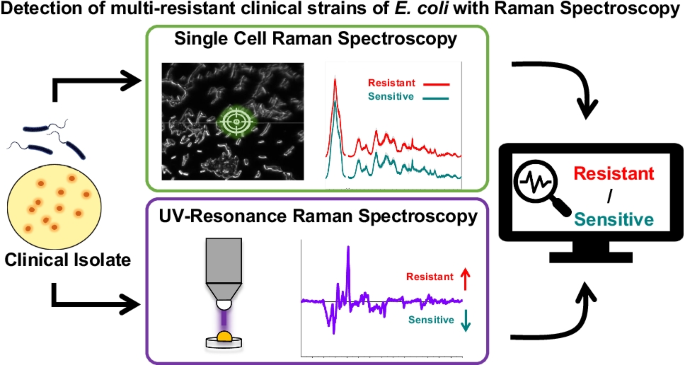I work for MeMed, a med-tech company developing a diagnostic tool based on host immune response.
We're using the host response to diagnose patients and reduce antibiotic overuse 🩺💊🦠 In my role as Scientific Affairs Lead I help establish international research collaborations, write papers about MeMed's latest clinical trial results and search for future funding opportunities
I did my PhD at Leibniz Institute of Photonic Technology, in Juergen Popp's group, working on research and development of innovative optical/photonic tools for point-of-care microbial diagnostics.
I used to teach at Friedrich Schiller Universität Jena - courses on Biophotonics and Raman spectroscopy
- Bachur et al. (2024), Journal of the American College of Emergency Physicians Open: A rapid host–protein test for differentiating bacterial from viral infection: Apollo diagnostic accuracy study. Our FDA clinical validation study
- Carroll (2024), Expert Review of Molecular Diagnostics: Assessment of MeMed BV assays for differentiating between bacterial and viral respiratory infections. An expert review from the lab manager at Johns Hopkins
- Halabi et al. (2023), Clin Microbiol Infect.: Host test based on TRAIL, IP-10 and CRP for differentiating bacterial and viral respiratory tract infections in adults: diagnostic accuracy study.
- Klein et al. (2023), Pediatrics: Diagnostic Accuracy of a Real-Time Host-Protein Test for Infection.
- Kalmovich et al. (2023), Biomedicines: Impact on Patient Management of a Novel Host Response Test for Distinguishing Bacterial and Viral Infections: Real World Evidence from the Urgent Care Setting.
- Mor et al. (2023), PLOS ONE: Bacterial vs viral etiology of fever: A prospective study of a host score for supporting etiologic accuracy of emergency department physicians.
- Hainrichson et al. (2022), Clinical Biochemistry: A point-of-need platform for rapid measurement of a host-protein score that differentiates bacterial from viral infection: Analytical evaluation.
- Stein et al. (2022), Frontiers in Pediatrics: BV score differentiates viral from bacterial-viral co-infection in adenovirus PCR positive children.
- Papan et al. (2022), Clin Microbiol Infect.: A host signature based on TRAIL, IP-10, and CRP for reducing antibiotic overuse in children by differentiating bacterial from viral infections: a prospective, multicentre cohort study.
- Schneider et al. (2022), Journal of Medical Economics: Cost impact analysis of novel host-response diagnostic for patients with community-acquired pneumonia in the emergency department. A cost-impact analysis 💲
- Moneyball by Michael Lewis
- A Murder of Quality (George Smiley, #2) by John Le Carré
- Troy (Stephen Fry's Great Mythology, #3) by Stephen Fry
- The Caves of Steel (Robot, #1) by Isaac Asimov
Between 2019-2021, I worked on medical applications of Raman spectroscopy. The work was done with a wonderful team, under the supervision of Prof. Juergen Popp and Dr. Petra Roesch
We were trying to use Raman spectroscopy for fast diagnostics of antibiotic resistant bacteria in hospitals.
In our work, we collected spectra directly from bacterial cells, and used machine learning algorithms (such as SVMs) to predict whether those bacteria are resistant to drugs. The idea --> to help doctors be able to prescribe the right drug 💊, to kill off the infection 🦠 - FAST!
- Nakar et al. 2022 - Detection of multi-resistant clinical strains of E. coli with Raman spectroscopy
- Nakar et al. 2022 - Label‐free Differentiation of clinical E. coli and Klebsiella isolates with Raman Spectroscopy
- Nakar et al. 2022 - Raman spectroscopy for the differentiation of Enterobacteriaceae: a comparison of two methods†
Enterobacteriacea | Klebsiella | E. coli Resistance | Sepsis | Raman Pipeline
- Raman Spectroscopic Method Diagnoses Infection at the Point of Care
- Invest in photonics now to fight infectious diseases and future pandemics
- Project Website
Between 2016-2018 I worked in Volcani Center. I was part of an interdisciplinary team which used fluorescence spectroscopy to detect water contaminations.
In that project, we collected water 💧 from different source wells and measured a huge spectrum 🌈 of auto-fluorescent signals. Using machine learning, we managed to identify the contaminations at X10 below the minimum required range, both in lab models and in our real collected water. That project was part of a collaboration with mekorot
Water |


